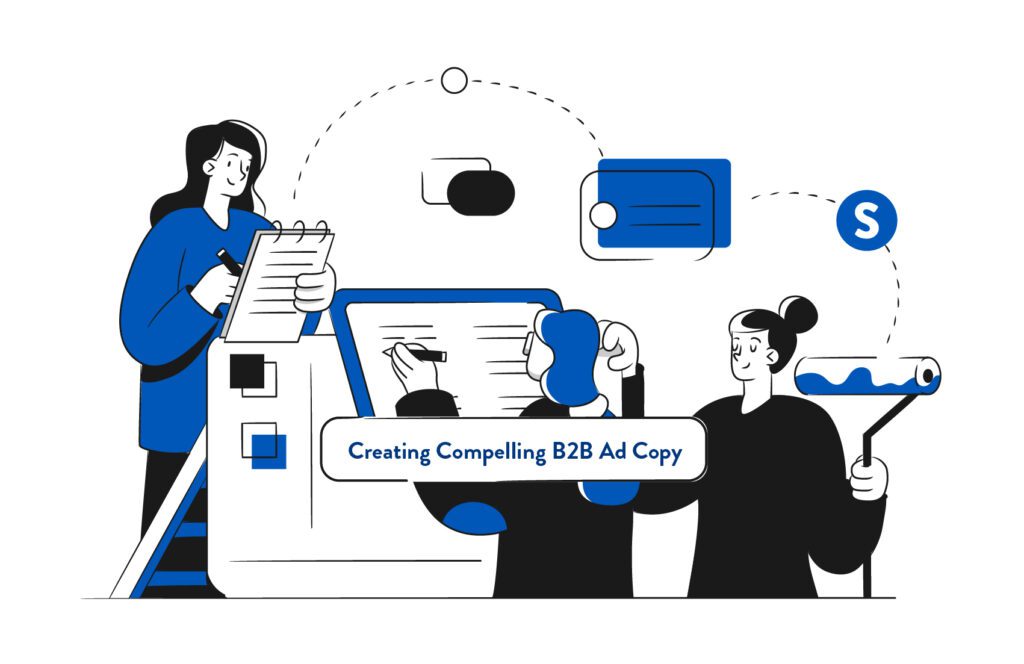
Creating ad copy that resonates with B2B audiences requires a deep understanding of your target market, a focus on value-driven messaging, and the ability to communicate complex ideas succinctly. Business decision-makers are looking for solutions that address their specific challenges, improve efficiency, or enhance their bottom line. In this blog, we’ll explore strategies for creating compelling B2B ad copy that captures attention, builds trust, and drives conversions.
1. Understand Your Audience’s Pain Points
To create effective B2B ad copy, start by understanding the pain points and challenges that your target audience faces. Business buyers are looking for solutions that can solve specific problems, streamline operations, or deliver a strong ROI. Your ad copy should speak directly to these concerns, positioning your product or service as the answer to their needs.
Actionable Tip: Conduct market research or engage with your sales team to identify the most pressing issues your target audience faces. Use this information to craft ad copy that addresses these pain points head-on, highlighting how your solution can make a tangible difference.
2. Focus on Value and Benefits
B2B buyers are driven by the value a product or service can bring to their organization. When crafting your ad copy, focus on the specific benefits your solution offers, rather than just listing features. Clearly articulate how your product or service can help businesses save time, reduce costs, increase productivity, or gain a competitive edge.
Actionable Tip: Use concise, benefit-oriented language in your ad copy. For example, instead of saying, “Our software has advanced analytics,” you might say, “Unlock actionable insights with our advanced analytics to drive smarter business decisions.”
3. Use Clear and Direct Language
In B2B advertising, clarity is crucial. Decision-makers are often bombarded with information and don’t have time to decipher complex or jargon-heavy messaging. Your ad copy should be straightforward, using clear and direct language that quickly conveys the value of your offering.
Actionable Tip: Avoid industry jargon and overly technical language unless it’s essential to your audience. Focus on making your message easy to understand and actionable. Test your ad copy with a colleague or team member to ensure it’s clear and impactful.
4. Leverage Social Proof and Credibility
Building trust is a critical component of B2B advertising. Decision-makers want to know that they’re making a safe and informed choice. Incorporating social proof, such as testimonials, case studies, or industry certifications, into your ad copy can help build credibility and reassure potential buyers.
Actionable Item:
Incorporate customer success stories or industry accolades directly into your ad creatives. Use specific metrics like “increased sales by 30%” or “trusted by 500+ companies” to establish credibility. Additionally, feature recognizable logos or client names where appropriate to strengthen your brand’s reputation and trustworthiness.
5. Create a Strong Call to Action (CTA)
A compelling CTA is essential for driving conversions in B2B advertising. Your CTA should be clear, specific, and aligned with the goal of your campaign, whether it’s to generate leads, drive downloads, or encourage sign-ups. The language of your CTA should create a sense of urgency or highlight the value of taking the next step.
Actionable Tip: Instead of generic CTAs like “Learn More,” use action-oriented phrases that convey value, such as “Get Your Free Demo,” “Download the Full Report,” or “Schedule a Consultation Today.” Ensure that the CTA is prominently displayed and easy to follow.
6. Tailor Your Message to the Buying Stage
B2B buyers go through various stages in their decision-making process, from awareness to consideration to decision. Your ad copy should be tailored to match the buyer’s stage, providing the right information at the right time. For example, ads targeting the awareness stage might focus on identifying a problem, while ads for the decision stage should emphasize why your solution is the best choice.
Actionable Tip: Segment your audience based on where they are in the buying journey, and craft specific ad copy for each stage. For example, early-stage ads might focus on pain points and benefits, while later-stage ads might highlight success stories and offer incentives to convert.
Conclusion
Creating compelling ad copy for B2B audiences requires a deep understanding of your target market, a focus on delivering clear and direct value, and the ability to build trust through social proof. By addressing the specific needs and challenges of your audience, using clear language, and crafting strong CTAs, you can develop ad copy that resonates with decision-makers and drives meaningful results for your business.
To read more tips on B2B marketing strategies, check out our other B2B articles. If you’re interested in partnering with STORY to optimize your current marketing efforts, visit our website to learn more about our marketing services.